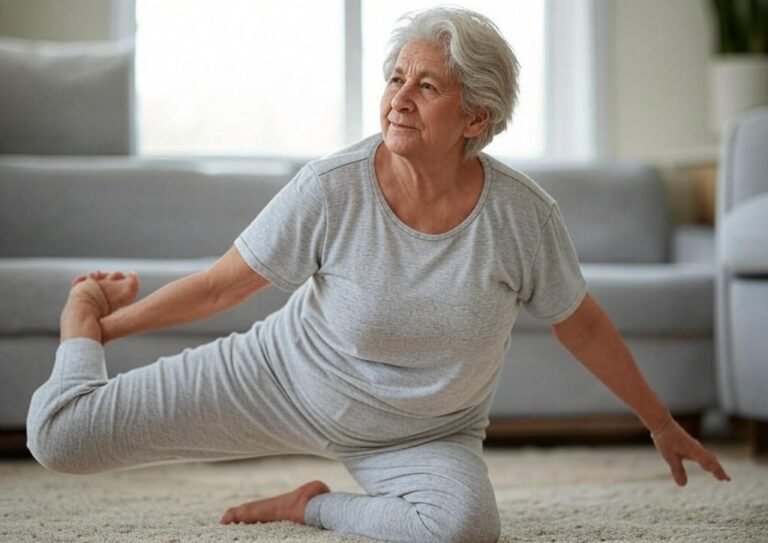How to Start Walking for Fitness in Your Neighborhood

Introduction
Walking for fitness isn’t just a trend—it’s a life-changing habit you can start right in your neighborhood. Imagine turning a casual stroll into a powerful workout that boosts your heart health, lifts your mood, and helps you hit your wellness goals. Whether you’re eyeing weight loss, more energy, or a way to soak up summer 2025’s sunshine, a fitness walking routine is your ticket. No gym fees, no fancy equipment—just you, comfy shoes, and a plan. This guide dives deep into crafting a walking workout plan perfect for beginners, with tips on safety, gear, motivation, and more. From scenic neighborhood paths to community walks, we’ve got everything to get you moving. Ready to step into fitness? Let’s make neighborhood walking your new favorite habit!
Why Walking is the Perfect Fitness Choice for Beginners
If you’re new to exercise, walking for fitness is like finding the cheat code to health. It’s gentle, free, and fits into any schedule, making it ideal for beginners in 2025. I learned this the hard way—after flopping at intense gym sessions, I started walking my neighborhood and never looked back. Here’s why it’s a game-changer:
- Low Impact, High Reward: Walking strengthens your heart and muscles without stressing joints. The American Heart Association says 150 minutes weekly cuts heart disease risk by 20%.
- Accessible Anywhere: Your neighborhood is a gym that’s open 24/7. No membership needed—just step outside.
- Mental Health Boost: Studies show a 30-minute walk reduces stress and sparks creativity. Ever notice how ideas flow better mid-stroll?
- Customizable: Walk 10 minutes or an hour—scale it to your level. Beginners can start slow and still burn 200–400 calories per hour, depending on pace.
Consistency is key. Aim for 3–5 walks a week, and you’ll feel stronger in weeks. In 2025, with wellness trends leaning toward sustainable habits, walking shines as a no-fuss way to stay fit.
Planning Your Walking for Fitness Routine
A fitness walking routine needs a plan to keep you on track. Without one, it’s easy to skip days or push too hard and burn out. Here’s how to set up a walking workout plan that sticks:
Set Clear Goals
Start by asking: Why walk? Maybe you want to lose 10 pounds, prep for a 5K, or just feel less sluggish. The CDC recommends 150 minutes of moderate exercise weekly, so aim for five 30-minute walks to start. Write down your goal—say, “Walk 20 minutes daily by June 2025”—to make it real.
Choose the Right Time
Timing matters. Morning walks kickstart your day with energy; evening ones melt away stress. In summer 2025, early walks beat the heat—trust me, I tried noon walks once and felt like a melted popsicle. Pick a time that fits your life, like post-breakfast or after work, and block it off like an appointment.
Map Your Route
Your neighborhood’s full of potential. Use apps like MapMyWalk or AllTrails to find safe, scenic paths. Start with flat, 1–2 mile loops—think local parks or quiet streets. As you get stronger, add hills or longer routes. I love passing my town’s duck pond—it’s a mini-reward every lap. Plan 2–3 routes for variety to keep things fresh.
A good plan blends purpose, timing, and exploration. Start small, and soon you’ll be craving those walks.
Essential Gear for a Walking Workout Plan
You don’t need a ton of gear for walking for fitness, but the right stuff makes a big difference. Comfort and safety are non-negotiable. Here’s what you need to hit the ground running—er, walking:
- Shoes: Supportive walking shoes are a must. Look for cushioning and arch support—brands like Brooks or Asics are 2025 favorites. Expect to spend $80–$150 for quality.
- Clothing: Breathable, moisture-wicking tops and shorts keep you cool. Layer with a light jacket for cooler days. Bright colors boost visibility.
- Accessories: A reusable water bottle keeps you hydrated. A fitness tracker (like a Fitbit or Apple Watch) logs steps and motivates you. I got hooked on hitting 10,000 steps daily—it’s addictive!
Comparison Table: Walking Shoes for Beginners
Walking Shoes for Beginners
| Brand | Model | Cost | Cushioning | Arch Support | Best For |
|---|---|---|---|---|---|
| Brooks | Ghost 15 | $140 | High | Medium | Long walks |
| Asics | Gel-Contend | $80 | Medium | High | Beginners |
| New Balance | Fresh Foam | $100 | High | Medium | Wide feet |
| Saucony | Guide 16 | $130 | Medium | High | Stability |
| Hoka | Clifton 9 | $145 | High | Low | Joint comfort |
Pro tip: Replace shoes every 300–500 miles to avoid aches. With the right gear, you’ll feel ready to conquer any neighborhood path.
Building Endurance with Your Beginner Walking Exercise
Endurance doesn’t happen overnight—it builds step by step. A beginner walking exercise plan helps you go from short strolls to confident strides without injury. Here’s a 6-week roadmap to get you there:
Week 1–2: Foundation
Start with 15–20 minute walks, 3–4 times a week, at a pace where you can chat comfortably. Focus on form: head up, arms swinging, feet rolling heel-to-toe. Rest days let your muscles recover. I felt silly tracking short walks at first, but those early steps built my habit.
Week 3–4: Intensity
Bump up to 25–30 minutes, 4–5 times weekly. Add a 5-minute brisk segment mid-walk—think “power-walking to beat the rain.” Try one longer walk (40 minutes) on weekends. You’ll notice your legs feel stronger and your breath comes easier.
Week 5–6: Stamina
Now aim for 35–45 minutes, 5 times a week. Mix in challenges like a hilly street or park stairs. Target 8,000–10,000 steps daily—apps like Google Fit make it fun to track. Hitting my first 5-mile walk felt like winning a marathon!
Progress feels amazing, but don’t rush. Listen to your body, and you’ll be amazed at how far you go.
Staying Safe While Neighborhood Walking
Neighborhood walking is awesome, but safety comes first. In 2025, urban and suburban areas offer tons of paths, but a few precautions keep you worry-free. Here’s how to stay secure:
- Be Visible: Wear bright or reflective clothes, especially at dawn or dusk. A clip-on LED light ($10 on Amazon) is a cheap safety win.
- Stay Alert: Skip headphones to hear cars, dogs, or people. I once missed a cyclist’s warning bell—lesson learned.
- Choose Smart Routes: Stick to well-lit, busy areas like main streets or community trails. Apps like Strava highlight safe local routes.
- Carry Essentials: Bring ID, a phone, and a friend’s contact info. Share your location via Google Maps if walking alone.
I got spooked once on a dim side street—now I plan routes like a pro. Safety lets you focus on the joy of walking.
Motivation Tips to Stick with Your Fitness Walking Routine
Staying motivated is the secret sauce to a lasting fitness walking routine. Life gets busy, but these tricks keep you lacing up:
Join a Walking Group
Neighborhood walking clubs are huge in 2025. Check Nextdoor or Meetup for local groups—many are free. Walking with others feels like a social hour, not a chore. My group’s coffee chats post-walk are half the fun!
Track Your Progress
Use a journal or app like MyFitnessPal to log miles, steps, or even mood. Seeing “30 miles this month” is a rush. I started snapping photos of cool houses on my route to mark progress—now I’ve got a whole album.
Keep It Fresh
Boredom kills habits. Rotate routes—try a new park or lake loop. Mix in podcasts (try “StartUp” for inspiration) or playlists with 2025 bangers. Experiment with interval walking: 1 minute fast, 2 minutes slow. It’s a total game-changer.
Motivation ebbs and flows, but small wins stack up. Reward yourself after a month—maybe new sneakers—to celebrate.
Case Study: Sarah’s Journey with Walking for Fitness
Let me tell you about Sarah, a 35-year-old teacher who turned walking into her superpower. In 2024, stress was eating her alive—long hours, no energy. She started a beginner walking exercise plan with zero fitness experience. Week 1, she did 15-minute loops around her block, feeling silly but refreshed. By week 4, she was hitting 30 minutes daily, loving her park’s shady trails. Three months in, Sarah was walking 5 miles regularly, down 10 pounds, and sleeping like a baby. Her secret? A killer playlist of 2025 pop hits and a route past her town’s duck pond—it became her happy place. Now, she leads a school walking club, inspiring kids and coworkers. Sarah’s story proves: start small, and walking for fitness can change everything.
Nutrition to Support Your Walking Workout Plan
Walking burns calories, but food fuels your strides. Eating right boosts energy and recovery for your walking workout plan. Here’s the breakdown:
- Pre-Walk Fuel: Eat a light snack 30–60 minutes before, like a banana, apple, or oatmeal. Carbs give you zip without weighing you down.
- Post-Walk Recovery: Within an hour, grab protein—think Greek yogurt, a smoothie with whey, or a turkey wrap. It rebuilds muscles.
- Hydration: Sip 8–16 oz of water per hour of walking. Add electrolytes (like Nuun tablets) for hot summer 2025 days.
- Snacks on the Go: Nuts or a granola bar are portable. In 2025, plant-based snacks like chia pudding are trending—perfect for walkers.
I used to skip meals before walks and felt sluggish. Now, a quick PB&J keeps me going strong. Balance is everything—don’t overeat, but don’t starve either.
FAQ: About Walking for Fitness
Conclusion
Walking for fitness in your neighborhood is the ultimate win: simple, free, and packed with benefits. From stronger legs to a clearer mind, this guide’s got you covered with plans, safety tips, and motivation hacks to make it stick. Whether you’re strolling for health, weight loss, or just summer 2025 vibes, every step counts. Start with 15 minutes, pick a sunny route, and watch your confidence grow. Grab our free walking for fitness guide today and make your neighborhood your gym—your body will thank you!






